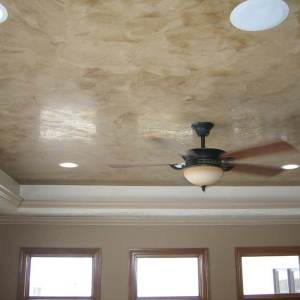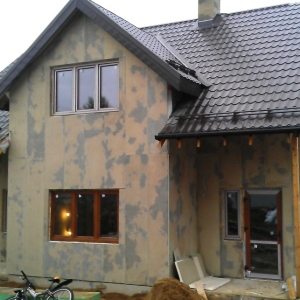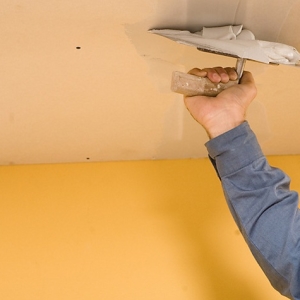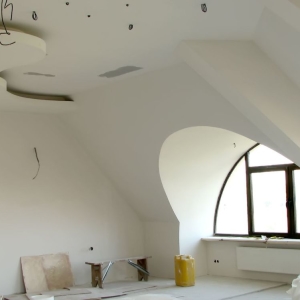During the repair, such a finishing material like plasterboard is often widely used. And it is often a question about his further processing, namely, the possibilities of plastering: how to work, so that the plaster does not crack and did not attack. Let's figure it out in this technological process and find out how to plaster plasterboard.
To begin with, remember that the plaster surface made of plasterboard is not a mandatory procedure. It is rather recommended, and it is advisable to hold it in such cases:- Significant curvatures that are present on plasterboard sheets. It should be borne in mind that with the help of plaster you can align the irregularities to 3-4 cm on the temporon meter. No longer succeed, since the GLC is capable of deforming under the influence of solid weight.
- Close up of microrelief. When installing sheets, there are sometimes such troubles like drops of a tool or sheet, and holes and dents occur in the latter. For sealing such damage, as well as when aligning the corners, and it is customary to use plaster.
- The use of decorative plaster. Plasterboard is an excellent base for such a mixture. In addition, special financial costs are not required to prepare the surface.
In other situations, you can not plaster GLK, as the sheet originally has a perfectly smooth surface.
At the first stage of work, it is necessary to properly prepare the surface under the plaster. Clean the drywall from the construction dust, which remained after its installation, using a wet sponge. If a lot of garbage is, it is necessary to arm the industrial vacuum cleaner.- If the defects are serious, then better plasterboard sheets are replaced by new ones, since further finish can simply emphasize all the errors.
- Eliminate with a putty all the irregularities of the sheet - dents, removing, sections where the joints and seams are present. Without this procedure, plaster will not hold on - she simply flies away.
- In the process of applying putty, it is also necessary to fill out the holes remaining after screwing the screws.
- In places where the sheets are joined, the entire length of the joint is put, having a self-adhesive mesh, slightly pressing it into the putty itself. If this material is not, the flieslinic bandage is suitable. Without reinforcement, the putty will not hold on the seams. The width of the putty should be greater than the size of the mesh used.
- In addition, the sections will have to be processed, where the sheets converge at an angle. On the inner and outer angles, along with putty, aluminum perforated profiles are used, which is placed directly on the layer of putty.
- When the substance hardens, apply the final layer in order to align the sections among themselves, which were not covered with putty, with processed.
- To achieve an ideally smooth surface, sand with coarse sandpaper. In addition, you can use a shallow metal grid.

- Cover the surface with a primer solution to strengthen it and increase the clutch of the surface with plaster.
- The choice should be made towards the compositions that are designed specifically for drywall. Such are acrylic primers who are inherent in vapor permeable properties.
- For priming, a foam roller is used or a brush, which has a large width. Wash the sheets are rustling to avoid their deformation.
- Wait until the primer dries.
- If you plan to put the walls and walls, and the ceiling of drywall, then you should begin with the last.
- Apply the stucco with a thin layer, distributing on the surface evenly, regardless of its type - a pasty mass or a dry stone crumb.
- If there is too much liquid in the plaster, it is only suitable for moisture-proof GLC.
- All work performed at a temperature that is 5-35 degrees above zero. Air humidity must be moderate.
- The process will not prevent security measures such as the use of gauze bandages and gloves.
- The pasty mixture is applied by applying a trowel. The layer thickness is selected, depending on the diameter of the grain present in the plaster: the layer is made approximately 2 times more than these inclusions.
- Before applying stone crumbs, the surface must be lubricating using a mastic glue composition. A sprayer is intended for the distribution of such plaster.
- Type a mixture from a container using a spatula, and shift onto the cell.
- Press the tool tightly to the surface, observing the sharp angle.
- Make smooth movements in any direction.
- If necessary, swipe the base on the base again.
- The next game impose close to the previous one so that the gaps did not arise.
- After dried up the first layer, you need to perform clean. You can use the same cell or flat roller to obtain a relief coating.
- Remember, the more smears you will make the brand, the surface will turn out darker.

After completing the work, wash the entire tool. If the material remains, then close the banks tightly, which are recommended to be stored in a dry room.


































